How To Set The Table for Jesa
Last Updated on December 19, 2024
Seollal (설날), or the Lunar New Year, and Chuseok, the Korean Thanksgiving are massive holidays here in Korea. The, usually, three day holiday has more than half of the country taking a trip. Be it by car, train, bus or plane, most families in South Korea will be headed to their hometowns or where the eldest member of the family is residing.
Once they arrive, preparations will get underway, if they haven’t already, so that everything is ready when morning comes for jesa. I’ve written another guide on how to hold jesa but this post will be all about how to set the table for jesa. There are very specific rules to know when setting the table so I’ve laid it all out below in the simplest of terms.
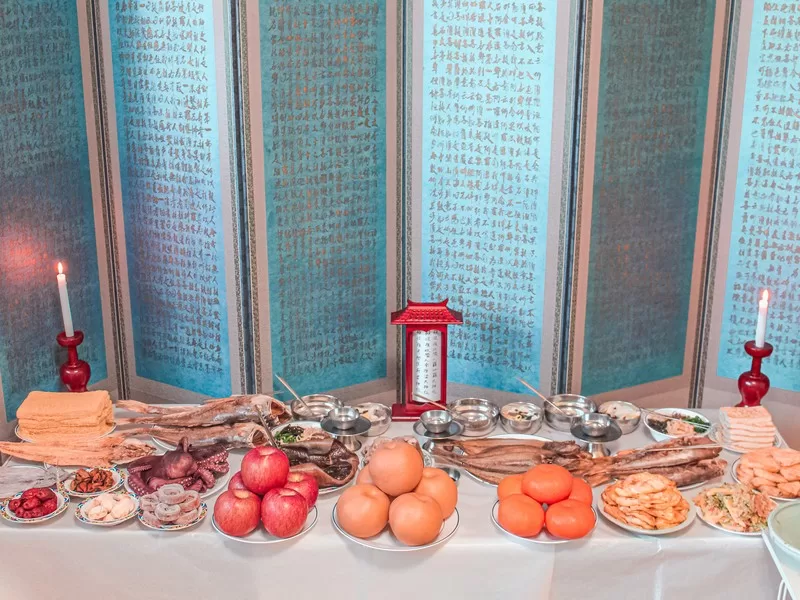
Here’s what you’ll find in this post:
(This post contains affiliate links, which means I receive a certain percentage of a sale if you purchase after clicking. Thank you for your support.)
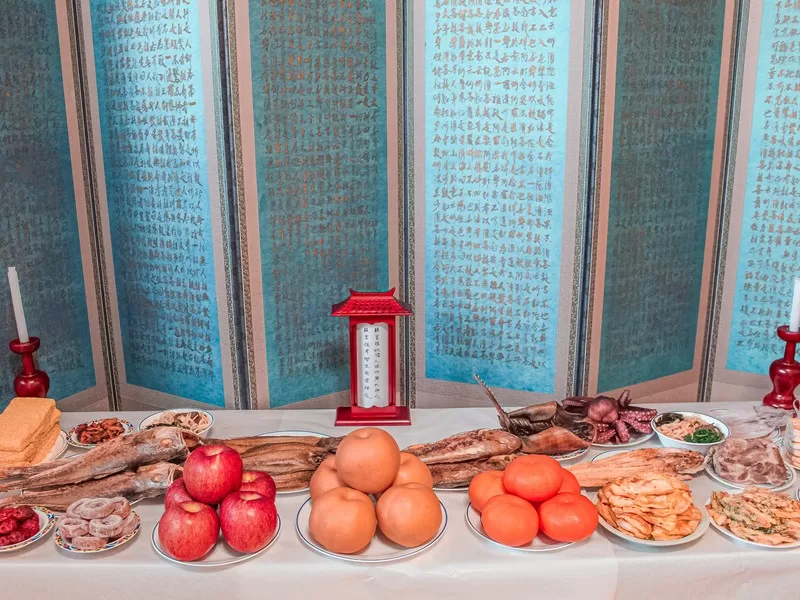
What’s the difference between charye and jesa?
Many foreigners confuse the terms charye (차례) and jesa (제사) when talking about this holiday and are not sure what they will watch or partake in. Actually, jesa (제사) is an all encompassing term for any memorial ceremony for the dead. There are a few different kinds of rites that fall under the term of jesa (제사) and they include: charye (차례), gijesa (기제사), sije (시제) and myoje (묘제).
- Charye (차례) ceremonies are held on major holidays like Chuseok and Seollal.
- Gijesa (기제사) ceremonies are held once a year on the anniversary of the death of the person being honored.
- Sije (시제) ceremonies are held every season.
- Myoje (묘제) ceremonies are held at the grave.
Families gather to partake in a charye (차례) ceremony on Seolla and Chuseok which is what most foreigners might recognize from tv shows or their own multicultural homes. This ceremony may honor paternal family members up to four generations back though in 1973 in an effort to reduce the amount of money being spent on rituals the government recommended that families honor just two generations back.
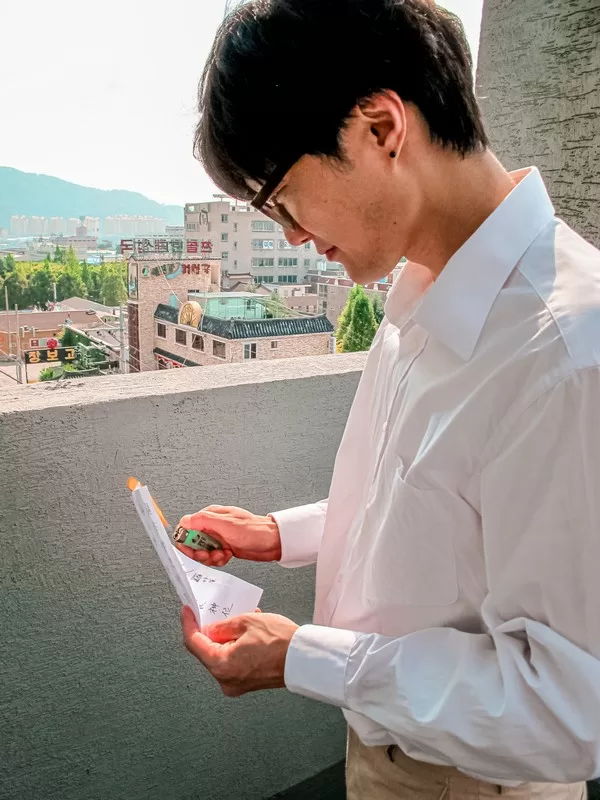
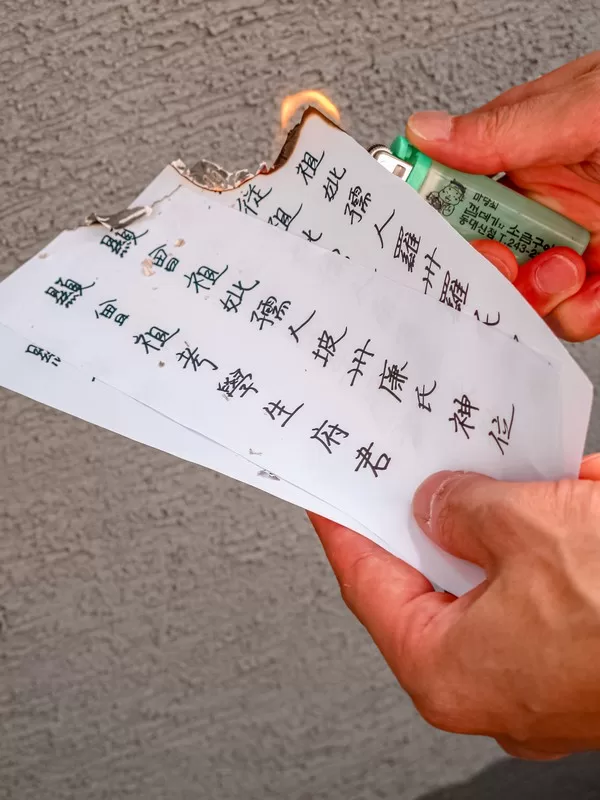
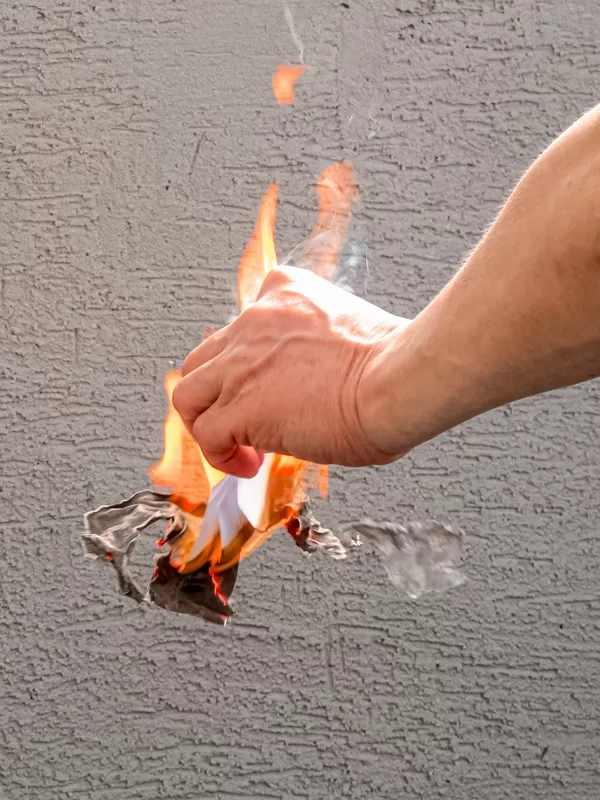
These ceremonies are passed down among the male heirs of the family so, my husband will honor his father and grandfather and so on in his household whereas his sister will honor her husband’s father and grandfather and so on. This can be a bit more confusing when there is no male heir in a household and then in the simplest terms, it would skip over to the closest male be it a cousin or uncle, etc.
That’s extremely simplified though, there would be a bit more information necessary to figure out which household would need to honor the family then. Jesa is a way to thank our ancestors for what we have received and to remember them at the same time.
Let’s Talk Table Setting!
The table setting varies from region to region and family to family, but there are some basic rules that are followed everywhere. Much like with the ritual itself, I want to remind readers that you don’t need to get too bogged down in the specifics and necessities to actually hold this memorial ceremony.
Remember that this ceremony is meant to honor our ancestors so if you can’t find some specific food, that’s okay. Set the table with what you have and your ancestors will appreciate it.
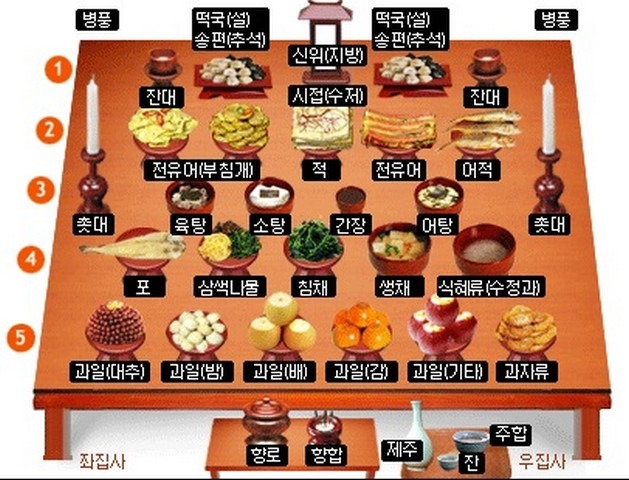
The Screen, Table, & Shinwi
To begin, set up the screen to the north and then the table will be placed in front (to the south) of it. The north is the direction for the dead and the direction they are usually buried in Korea. If you’re in a multicultural marriage like me, you may have had your Korean partner tell you that you cannot place your bed with the head end to the north. This is why.
On the side of the table closest to the screen, the shinwi (신위), which is the “spiritual body” of the ancestors, namely a piece of paper with their names written in Chinese characters, sits in the center with candles flanking it. The shinwi can take different forms.
For us, we have a tablet that paper is slipped into with the names written in Hanji. Since we go through three rounds of ancestors, the paper is put in and another replaced three times during our ceremony. These days, many families are opting to have portraits of ancestors on the table instead of the small tablet with names.
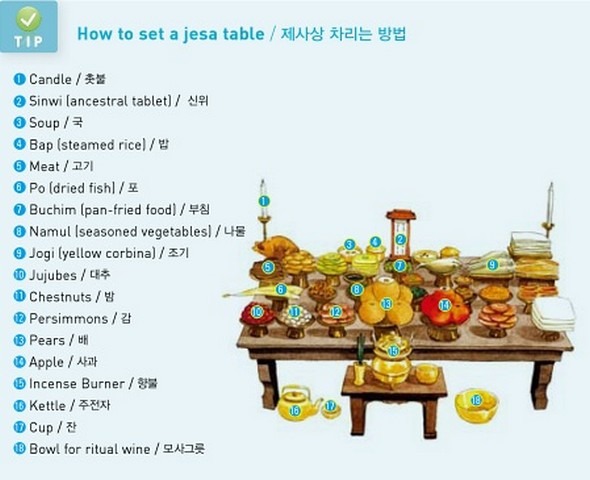
Fruits & Desserts
In the first row of food closest to the living who would be sitting opposite the ancestors, there would be fruits and desserts. Commonly, dates, apples, Korean pears, chestnuts, persimmons and jujubes may be placed in the front row but don’t just place them willy-nilly. Red foods should be placed on the east end of the table while white foods should be placed on the west.
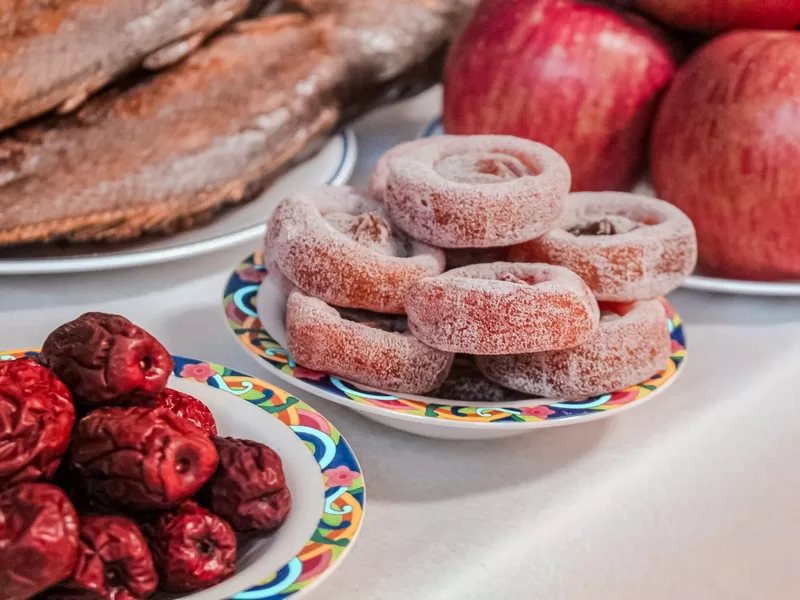
So, apples would be on the east with the jujubes while the Korean pears would be on the west. Other cookies and desserts like yakgwa (약과) can be in the front row as well but, again, the color of the food should be taken into account when finding an appropriate spot for it.
In my family a few years ago they discussed how the outside of the apple was red, but the inside was white. They decided placing the apples more central in line was appropriate because of that.
Basically, there are some standard rules, but don’t be so strict with yourself. The more important part is the ceremony and not having exact placement of everything on the altar table.
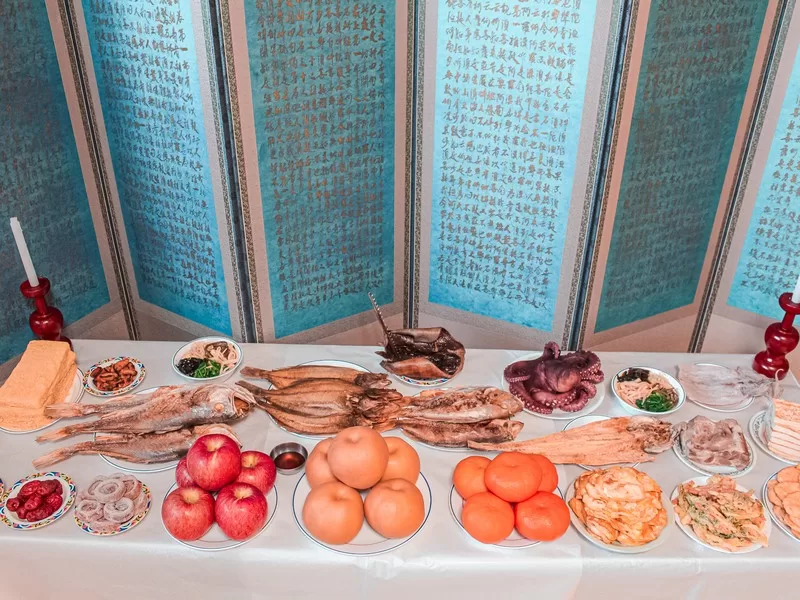
Meat & Vegetables
The second row back, behind the fruit, would contain different dried fish and cooked or fermented vegetable side dishes. There may be tofu here as well as cod, squid or other fishy delicacies. If a fish is included on the table that has a head, the head should face the east with it’s back facing south so that it would look right side up to the ancestors on the other side of the table.
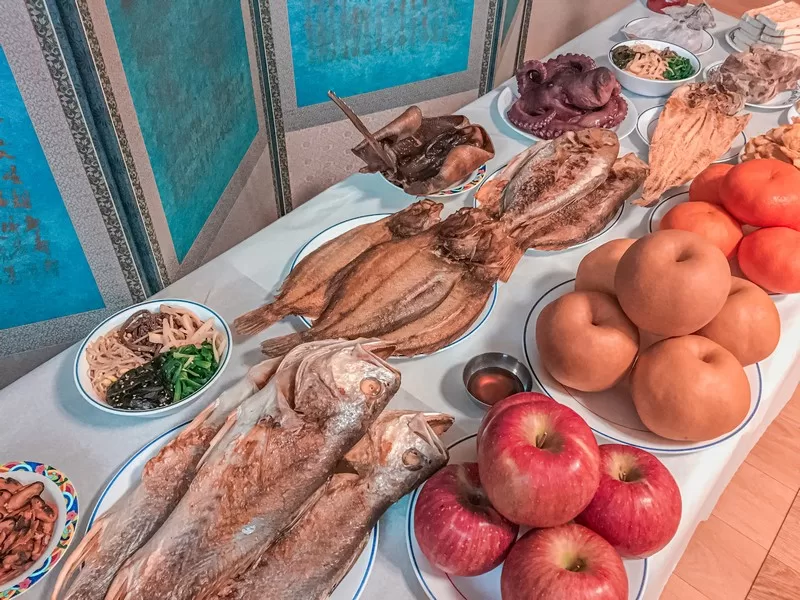
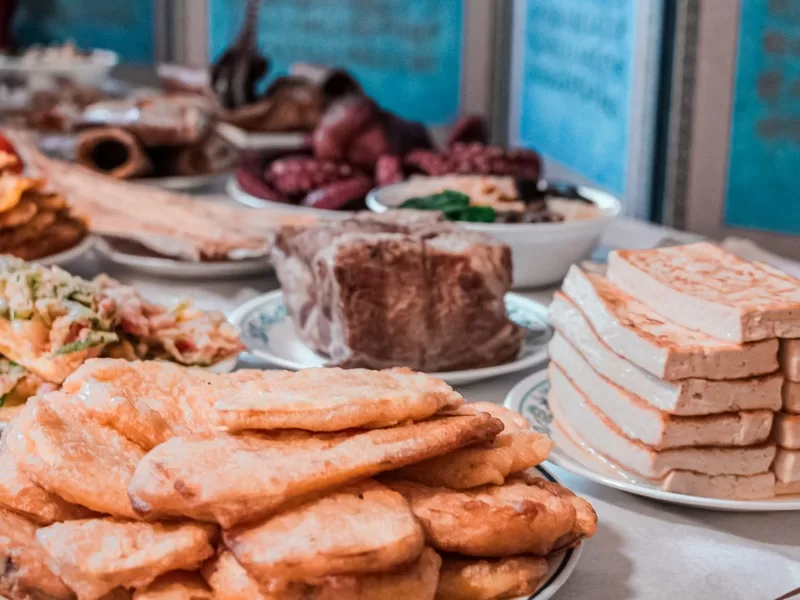
Again, red foods would be on the east so that would include most meat while white foods, which include fish would be on the west end of the table. How much meat or fish is on the table varies widely among the regions of Korea. In our house, for example, we have more fish on our table because my husband’s family is from a coastal area. My friends in the north usually have more meat dishes on their table instead.
Soups & Rice
The final row on the table, closest to the ancestors contains a bowl of rice and a bowl of soup for each ancestor being honored. The bowls of rice should be piled high to look like a mound over the top of the bowl. The rice bowl should sit on the west side of the rice on the east side, so the rice should be on the left with the soup on the right when you look at it so it is correct if the ancestors were looking at it.
The table can have as few as two or three rows of food or as much as five or six as again, it is up to the family and it depends on the size of the table. We have a long table but if you have a shorter wider table then you’ll probably have more rows of food.
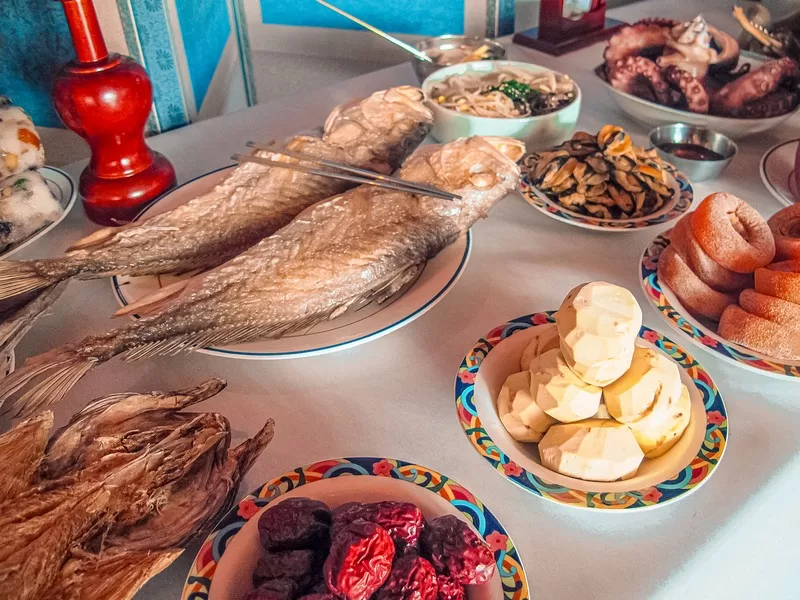
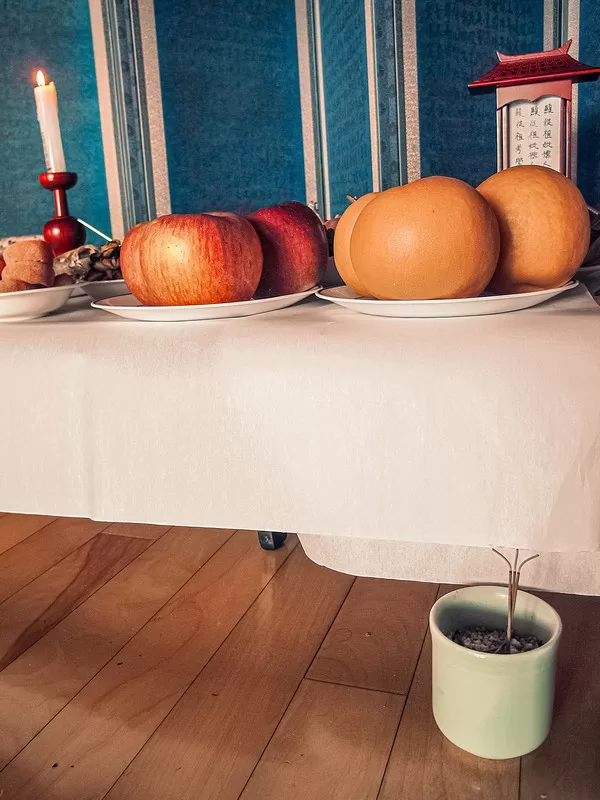
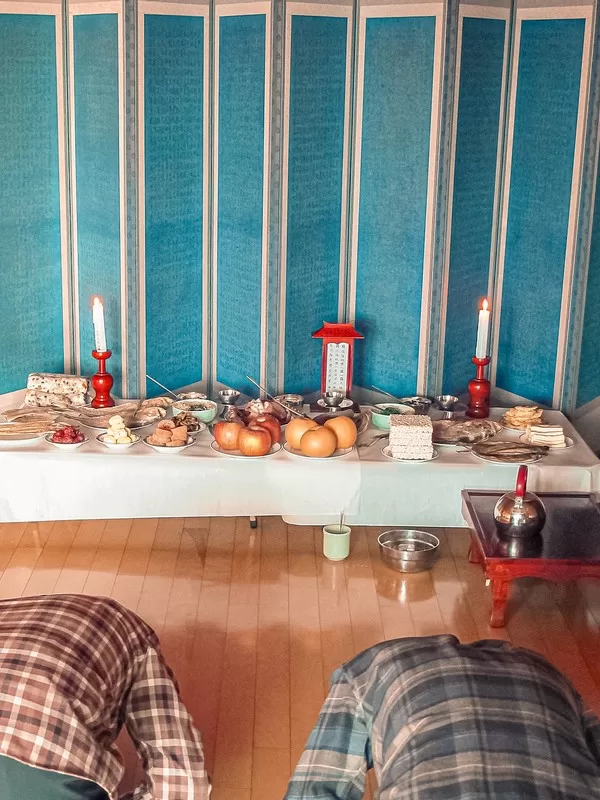
Cheongju & Incense
Once the table has been set, and possibly a discussion with a few members in your house as to whether or not everything is correct as often happens in my husband’s house, a smaller table is set up in front of the altar of food. Cheongju (청주), similar to a sake, is placed on that table to be used during the rite.
Also necessary to begin is incense and an incense bowl packed with sand which is placed on the floor just in front of the altar table.
If you’re interested in trying to the traditional Jesa food but don’t have time to wait until Seollal or Chuseok, there are actually restaurants that serve Jesa meals year round. This meal, called heotjesabap, originated in Andong, Korea and if you visit that city you can find restaurants serving up some great Jesa food and then go and visit the Andong sites.
Now the table has been set, you’re ready to honor the ancestors that came before you.
Happy Seollal, or Lunar New Year!
새해복 많이 받으세요.
(Sae-hae bok manhi ba-deu-sei-yo)
Did you like this post? Pin It!
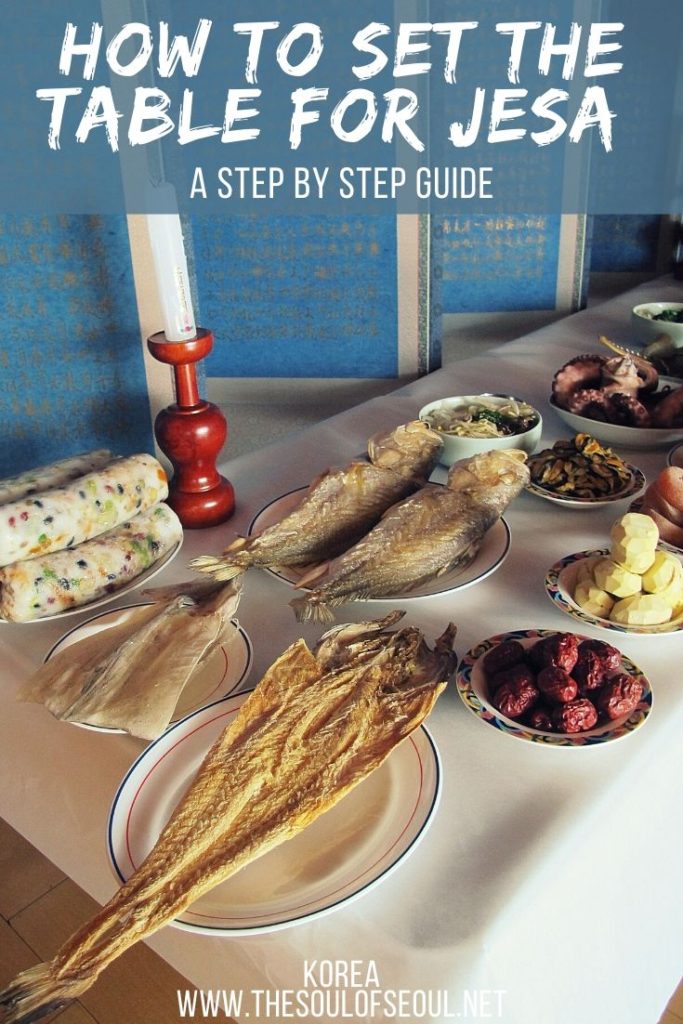
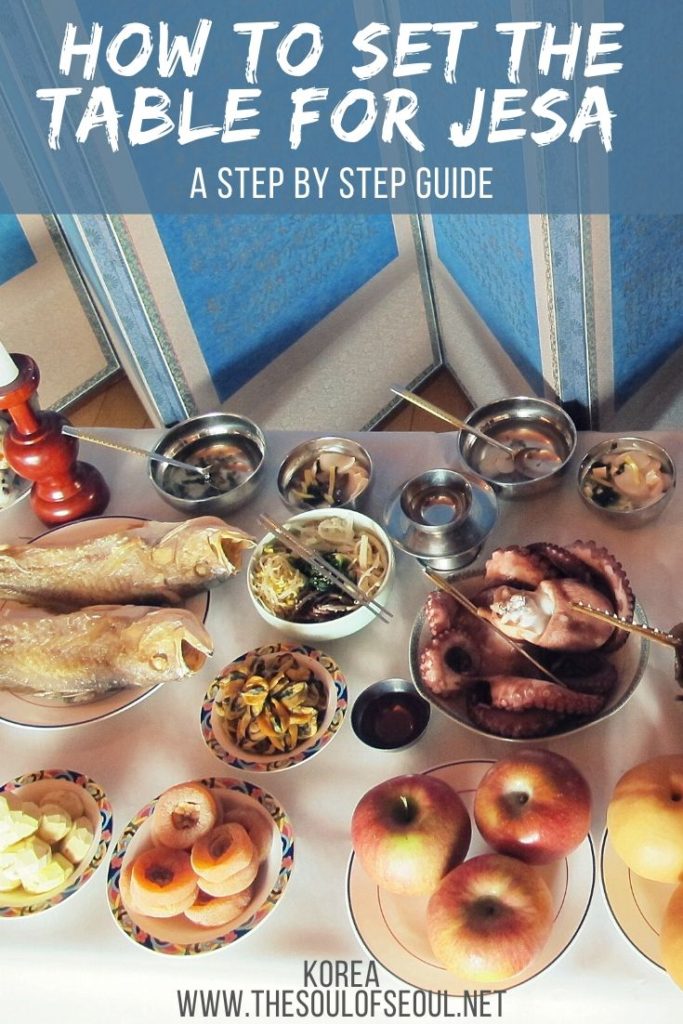

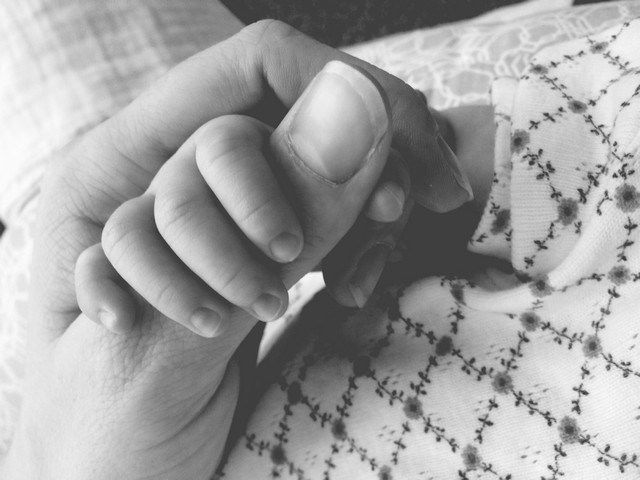
8 Comments
Syang
What happens to the food afterwards?
Hallie
We eat it! ^^
isabelle
the people at the jesa will split it up and take it home
Will
Amazing. Such a ritual deserves such intricacy. Well done.
Hallie
Thanks Will. And just think, that’s just the set up for the ritual. The ceremony itself is even more complex with the order and what to remember to do in my opinion.
Will
I know, I just help make some food the night before and sleep through the ceremony as quietly as I can so as not to disrupt the ancestral rites.
Kang Ju-won (강주원)
When I was young, I thought it was a hassle. But now, it’s kind of touching because you are making efforts to remember and act as if your loved ones are alive (even if for one day).
Hallie
Yeah. I’ve always had students that complain about the traveling and women that complain about the prep but the tradition and time together is really special I think.